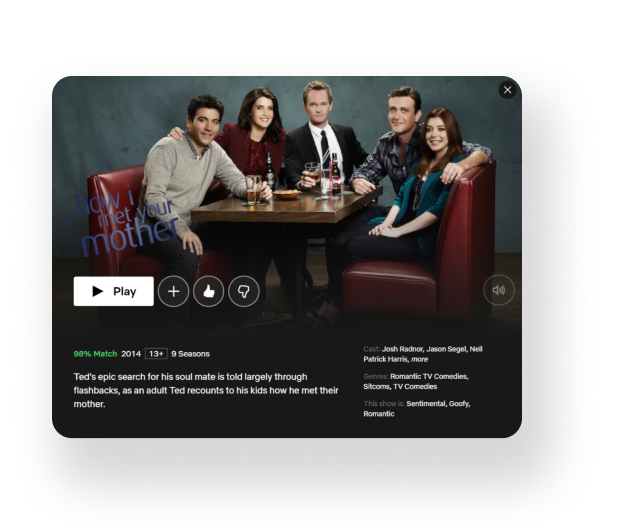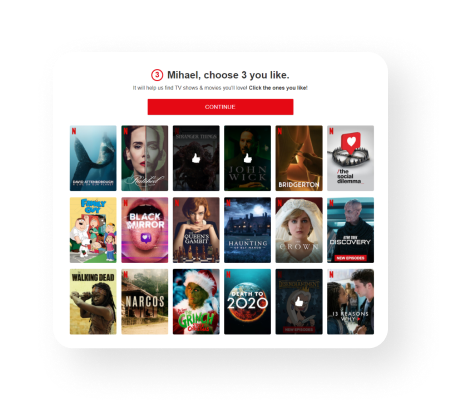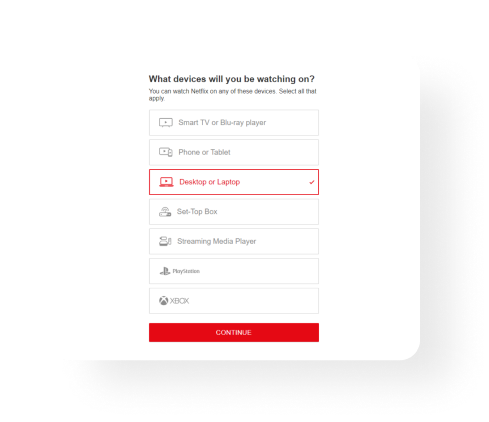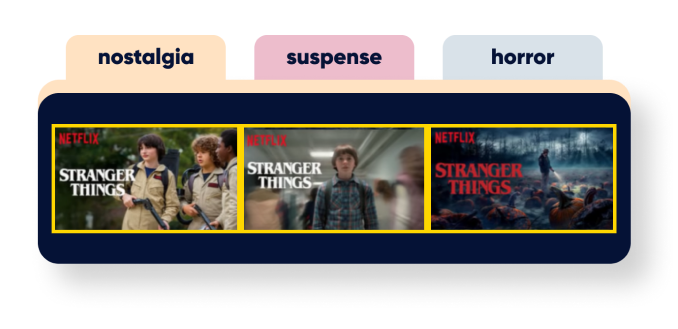Part
01
of one
Part
01
What strategies are streamers using to personalize content?
Key Takeaways
- According to Forbes, streaming services are using algorithms to personalize the homepage. Some streaming platforms ask customers about their viewing preferences, including their favorite TV shows, when they first sign up for the service. Thereafter, the platforms use an algorithm to recommend other shows that users might enjoy.
- Streaming services use data and analytics to personalize content to users. The platforms "collect data on what viewers watch and when they watch it." The data is analyzed and used to customize what to recommend to customers.
- Streaming services are using tailored product thumbnails to personalize or tailor content to users. They “tailor the thumbnail on each TV show to match the user’s viewing habits.”
Introduction
The research provides five strategies that streaming services use to personalize or tailor content to users. They include strategies like the use of algorithms to personalize the homepage, the use of tailored product thumbnails, and time-based recommendations. The report also presents a brief overview of two algorithms used by Netflix as additional findings.
Use of Algorithms to Personalize the Homepage
- According to Forbes, streaming services use algorithms to personalize the homepage. Some streaming platforms ask customers about their viewing preferences, including their favorite TV shows, when they first sign up for the service. Then, the platforms use an algorithm to recommend other shows that users might enjoy.
- Other streaming companies use the feedback provided by customers when asked if they liked or disliked a show. Thereafter, more of what customers like is recommended to them.
- Hulu is an example of a streaming platform that uses algorithms and customer feedback to personalize each user’s home screen and recommend new shows.
- Netflix is another streaming platform that uses algorithms to personalize the homepage. The company asks new customers several questions about their viewing preferences, including "three favorite TV shows and which device they plan to watch the shows from." Netflix's algorithms use the gathered insights to recommend other TV shows users might prefer.
- Insider's Bas Drogtrop thinks Netflix's algorithm works by assessing and recommending what other customers who watched what the user viewed chose next. Specifically, it works vertically to show customers the categories they might enjoy the most and horizontally to show several TV shows most similar to what the user has been watching.
Data and Analytics Strategy
- Streaming services use data and analytics to personalize content to users. The platforms "collect data on what users watch and when they watch it."
- They analyze the data and use it to customize what they recommend to customers and the order in which the recommendations are displayed on the customer's screen.
- Hulu is an example of a streaming platform that uses data and analytics to tailor content to users. It uses an enhanced recommendation engine to track what its customers watch and when they watch it. It then analyzes data from the engine to recommend shows to users.
- According to Databricks, to provide a personalized experience to customers, Disney+ uses a data platform with AWS, Databricks, and Delta lake technology to process and provide billions of content per hour. The company leverages the data produced by the platform to help the recommendation engine to personalize experiences and optimize the individual or group watch experience.
Use of Tailored Product Thumbnails
- Selected streaming platforms have discovered that the thumbnail picture is the biggest influence on a customer’s decision to watch a show or not.
- Therefore, they personalize “the thumbnail on each TV show to match the user’s viewing habits.”
- Netflix is an example of a streaming platform that customizes the product thumbnail. After the company found out how important it is to influence a customer's decision to watch a show, it “tailors the thumbnail on each TV show to match each user’s viewing habits.”
- For example, if a customer spent several days watching horror TV shows, Netflix tailors their thumbnail to look gloomy. However, if a customer watched comedy movies for several days, Netflix changes it to look more lighthearted.
Using A/B Tests
- According to VWO, streamers use A/B testing to personalize or tailor content to users. Optimizely states that "A/B testing is a method of comparing two versions of a web page or app against each other to determine which one performs better."
- Streamers conduct studies that offer several users varying experiences, including content, design, and the mechanism of finding shows. The company then asks them to choose what they prefer. Insights from the study are then used to make informed choices. For example, if one design gets more people to watch a show than the other, it is incorporated across the streaming service.
- An example of a company that has leveraged this strategy is Netflix. The company chooses approximately 100,000 users to test several experiences (such as landing cards) in 250 A/B tests per year.
- Each test offers two different versions of experiences to viewers to gauge how they react and respond to any suggested changes. Netflix then uses data collected in the study to personalize customer experiences and offer content, images, and videos to customers based on what the majority likes.
Time-Based Personalization
- According to VWO, time can be a strong element of personalization for streaming services. They use it to improve engagement and user experience.
- Time-based recommendations are used both by music streaming platforms (e.g., suggesting spiritual podcasts early in the morning) and video ones (e.g., TV series that are likely to be binge-watched are recommended on the weekends, when people tend to have more time).
- Netflix is an example of a service that uses this type of personalization. For instance, when people log in at night, it proposes short content or content that had been partially watched before.
Additional Findings
- According to Gibson Biddle, a former VP of Product and Netflix, the "Category Interest" algorithm used by Netflix is based not only on data gathered from users but also on categorization by movie and TV experts.
- In its latest iteration, it can not only provide a recommendation but also explain the reasoning behind it, e.g., by proposing a category "Cult Comedies from the 1980s" to someone who likes "Airplane" and "Heathers."
- Biddle notes that the algorithm increased the share of users who watch at least 40 minutes each month.
- Furthermore, he believes that Netflix's "Play Something" button for people who are not sure what to watch is the future of personalization. He estimates that it is currently used by 2-3% of members but it has significant growth potential, including being able to factor in users' interests, mood, and multiple other variables.
Research Strategy
To provide strategies that streaming services use to personalize or tailor content to users, we leveraged the most reputable sources of information that were available in the public domain, including Forbes, Entrepreneur, Databricks, Insider, and VWO. We also used one blog, Gibson Biddle's, as he is a former VP of Product at Netflix.



